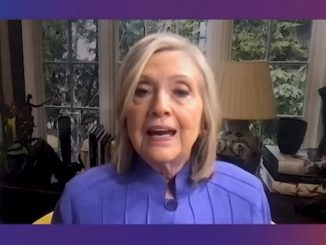
| Published June 1, 2025
As tensions escalate between Russia and NATO, recent reports from the Institute for the Study of War (ISW) and statements by German defense officials underscore the growing concern over Russia’s military posture and intentions.
Russia’s Military Buildup and Strategic Posture
The ISW has highlighted several indicators suggesting that Russia is preparing for a potential large-scale conflict with NATO. Key developments include:
-
Economic Mobilization: Russia is restructuring its economy to support prolonged military engagement, with increased defense spending and efforts to circumvent international sanctions.
-
Military Expansion: Plans are underway to form new military units, including combined arms armies, divisions, and brigades, aimed at enhancing Russia’s conventional warfare capabilities.
-
Legal Framework for Wartime Economy: A decree signed by President Putin allows the government to take control of defense enterprises failing to meet state defense orders, indicating a move towards a wartime economy.
These actions suggest that Russia is not only focused on the ongoing conflict in Ukraine but is also preparing for the possibility of a broader confrontation with NATO.
NATO’s Response and Preparedness
In response to Russia’s military activities, NATO members are reassessing their defense strategies:
-
Increased Defense Spending: European countries are boosting their defense budgets to counter the growing Russian threat.
-
Strategic Assessments: German Defense Chief General Carsten Breuer has warned that Russia could pose a significant threat to NATO within the next four years, emphasizing the need for readiness.
-
Focus on Vulnerable Regions: Areas like the Suwalki Gap, bordering Lithuania, Poland, Russia, and Belarus, are identified as potential flashpoints requiring heightened security measures.
NATO’s strategic recalibrations aim to deter potential aggression and ensure collective defense capabilities are robust.
The broader implications of Russia preparing for a potential all-out conflict with NATO—as reported by both the Institute for the Study of War and Western defense officials—extend far beyond Ukraine. They reflect a systemic shift toward long-term geopolitical confrontation that could reshape global security and alliances. Here’s what it means in context:
1. Return to Cold War–Style Posturing
Russia’s military and economic mobilization points to a pivot from a limited regional war to a broader deterrence or confrontation stance—similar to Cold War dynamics. This includes:
-
Rearmament and expansion of military-industrial capacity.
-
Permanent militarization of its borders with NATO-aligned states.
-
A long-term ideological and military standoff between East and West.
2. NATO’s Strategic Awakening
NATO, particularly European members, are being jolted into action:
-
Germany and other EU countries are now taking Russia’s threat seriously and accelerating rearmament.
-
Vulnerable regions like the Baltics and Eastern Poland (e.g., Suwalki Gap) are becoming focal points for troop deployments and defense planning.
-
NATO cohesion will be tested: countries must agree on deterrence levels without over-escalating.
3. Global Military and Economic Consequences
-
Military: An arms race is likely, not only in Europe but potentially spreading to Asia (especially with China watching closely).
-
Economic: A shift toward “war economies” in both Russia and the West could affect global markets, supply chains, and inflation.
-
Energy: Energy security becomes critical again, especially for Europe, which remains vulnerable to Russian energy leverage.
4. Diplomatic Channels Closing
-
Putin’s domestic messaging and legal moves signal that Russia is preparing for confrontation, not negotiation.
-
Peace talks with Ukraine may become purely symbolic or strategic distractions while real planning happens elsewhere.
-
Countries like China, India, and Turkey will face growing pressure to pick sides—or mediate.
5. Public Perception and Psychological Warfare
Russia’s declarations about being ready for war with NATO serve not only military purposes but also psychological and political ones:
-
To demoralize Western publics and fuel isolationist sentiment.
-
To strengthen domestic support in Russia.
-
To test Western red lines before pushing them further.
Overall Takeaway:
Russia’s mobilization for a possible conflict with NATO marks a dangerous turning point—from a regional war in Ukraine to preparations for a long-term, potentially global standoff. This signals that Moscow is no longer simply reacting to events but strategically preparing for confrontation with the West, reshaping NATO’s priorities, Europe’s defense posture, and global geopolitical stability.
The world is entering a new era of Cold War–like tension—militarized, unpredictable, and with high stakes for diplomacy, security, and economic order.
SOURCES: ZEROHEDGE – Kremlin Prepared For All-Out Conflict With NATO: Institute For War
BBC – Russia may attack Nato in next four years, German defence chief warns
NEWSMAX – Institute for War: Kremlin Prepared for War With NATO





https://mastodon.world/@Herman/114610127570121676